If you’re looking for a new species develop as small bonsai, dwarf pussy willow may be a good option.
Procumbent, small leaved varieties grow slowly but are easy to work with. The charm of the trees are the catkins they produce in spring.
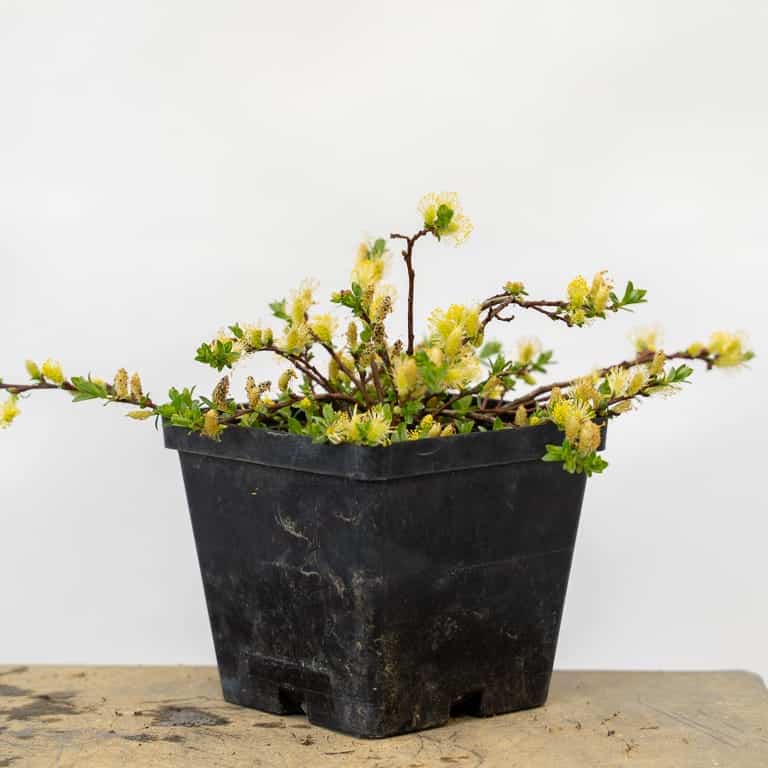
Cutting-grown willow
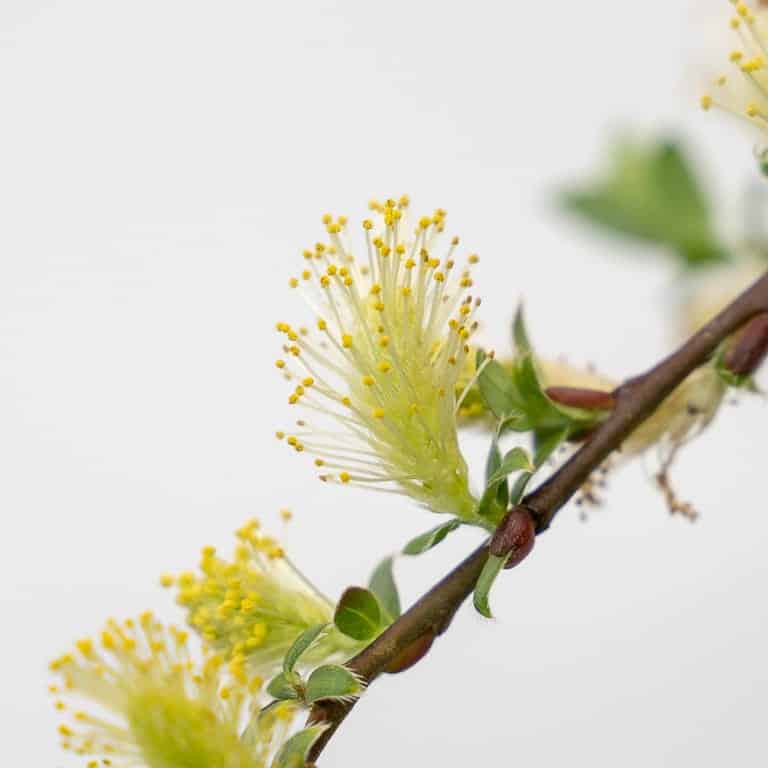
Pussy willow catkins
Some weeping cultivars prefer to send new shoots from the base of the trunk instead of developing a central leader. If this is the case, frequent pruning of these shoots is required to develop a central leader.

New shoots growing from the base of the trunk
As dwarf willows age and develop more of a trunk, they are less likely to produce these low shoots and instead produce good branch growth.
I’ve been working with cutting-grown willows for the past 15-20 years. They were mostly neglected for half of those years, but they respond well to standard deciduous care consisting of fall pruning and trimming of long shoots when they appear.
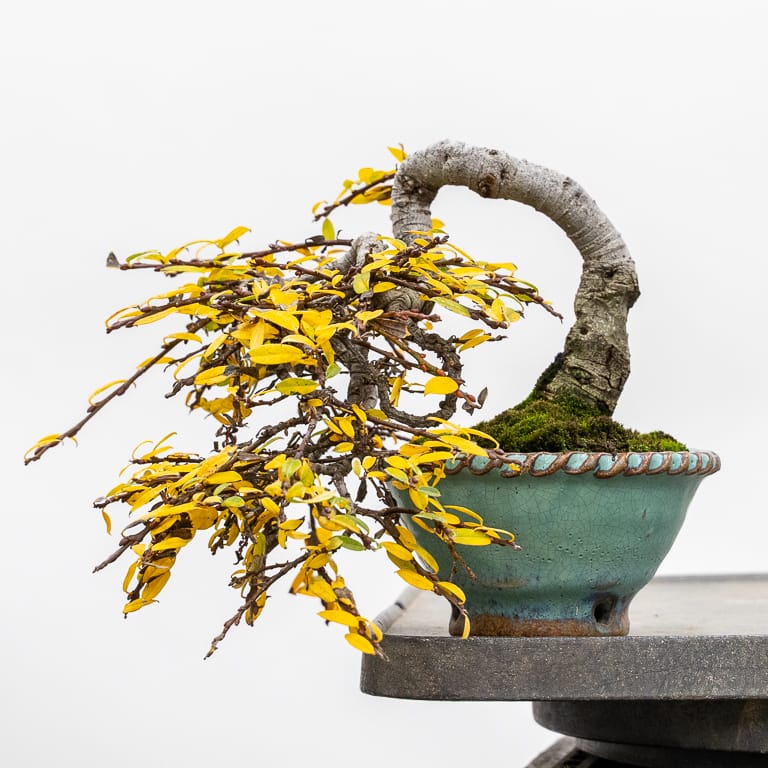
Fall color on dwarf pussy willow
Most of the shoots on this tree developed in the past year. When the leaves turn color, I prune to several healthy buds per branch.
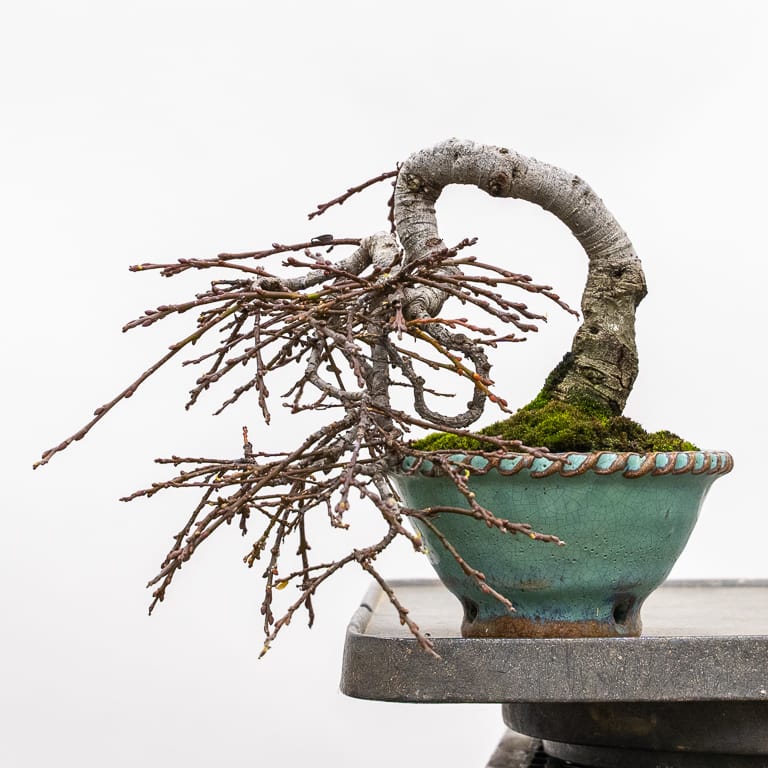
After removing the leaves
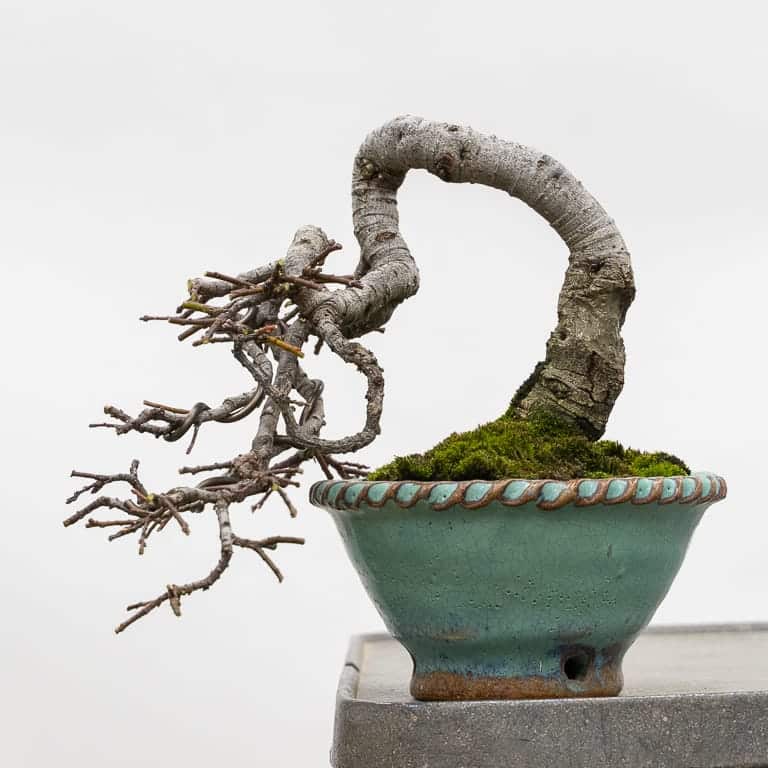
After cutback – 6″
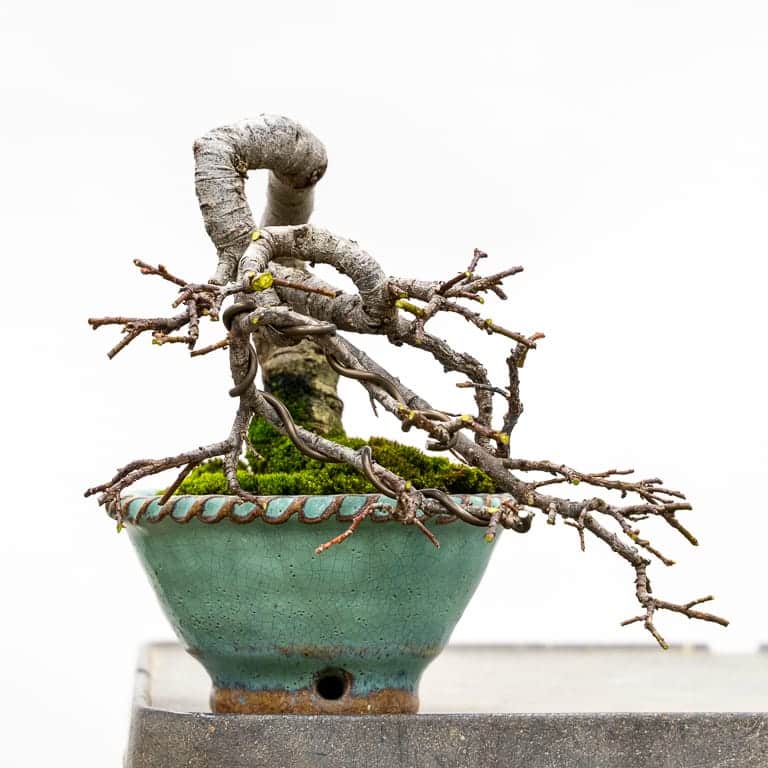
Left side
One thing I’ve learned to watch out for with the species I’m working with is that large wounds don’t heal over. I don’t know if this is characteristic of willow in general or if the tree just needs to be growing more vigorously to produce ample callus for healing wounds. As a result, I avoid letting branches get too large before removing them.
Do you have experience with pussy willow bonsai? Let us know if you have suggestions for working with them or if you can identify the above species – I’d love to know what kind of willow this is!
Subscribe to Bonsai Tonight
New Posts Delivered Every Tuesday and Friday
Andy Polaine says
I only get Salix Cinera when running it through PictureThis, which you probably already know. Were you looking for the specific cultivar?
Jonas Dupuich says
Thanks, Andy – and yes, it’d be great to know the cultivar. The only cinera I found have different flowers so I’m curious if there’s a cultivar that’s a match!
Bob Boyd says
Jonas,
I picked up this willow cutting at Lone Pine Nursery about 3 years ago. Not sure if it’s the same as yours but it is small leaved and procumbent. I didn’t know what to do with it until reading your article. I posted pics on your Twitter because I don’t know how to add pics on your blog(?) Thanks.
Jonas Dupuich says
Thanks, Bob! I’ll have to visit and see if the ones at Lone Pine are the same.
Jiecheng Zhang says
What a lovely species, and even more beautiful styling! Do you happen to know where can I buy them? 🙂
Jonas Dupuich says
Thanks! I don’t know where to find them. I’ve seen various dwarf willows in retail nurseries but I haven’t see this one.
Todd Morgan says
I am glad to hear that you can cut those willows back…
I have some “dwarf” willows that I obtained from someone doing a presentation to our bonsai club, Bonzai Kai, of Santa Cruz, many, many years ago…. every branch that I cut starts a dieback that eventually goes all the way back to the base, I start cuttings and these grow well, but as soon as I cut a branch as these get bigger, not even a large branch, it starts the dieback… with or without, cut paste, it doesn’t matter.
All I do now is cut a few small, thin branches to put in water with other types of cuttings that need help rooting…that works just fine, but, eventually, all of the bigger trunks die back to nothing… so I have given up on trying to develop them…
These do not seem to be the pussy willow type, just some kind of ” central valley” willow….
Also, I have the same problem/ issue with the curley willow…
Jonas Dupuich says
Wow, that sounds like quite a challenge with the dieback! The standard defense against dieback is to make sure there are lots of healthy roots and to not cut below healthy buds. Beyond that, I don’t know of any obvious tips.
Todd Morgan says
“don’t cut below healthy buds”? does that mean below ALL healthy buds? because when you cut back the longer shoots on your tree, aren’t you cutting below healthy buds? and the only challenge I have with healthy roots is to keep them from filling up the pot, as they grow roots at a stupendous rate… maybe I am not repotting them often enough? thanks for your response…
Jonas Dupuich says
Ha, great question! You’re right in that we’re always cutting below healthy buds. A better way to say this would have been: “make sure to leave at least one or two healthy buds” (i.e. don’t cut below all healthy buds).
As for the roots, that’s a characteristic of willow. It’s more of a hassle than a problem, and it’s a lot better than not getting enough root growth!
Joel Otteman says
Some variation of Salix Caprea? Beautiful.
Jonas Dupuich says
Could be – there’s enough variation of the flowers that it’s a candidate but I haven’t seen a good match yet for the leaves.
Dominique Conilleau says
Hello Jonas
I am from France thank you very much for all the articles
Really very interesting. Maybe it’s salix “Iona”?
Jonas Dupuich says
Thanks, Dominique! Salix repens ‘Iona’ is the best guess I’ve seen. I’ll start looking for it in nurseries and see if I can get my hands on one.
Harry van Enckevort says
Hi Jonas,
I acquired a couple of plants that look like the pictures on your site many years ago from a garden centre where they were identified as “Iona Willow”. Wildly cascading plants, growing in large pots standing in water, with extensive root systems but small, stumpy trunks. I now understand they are a cultivar of Salix repens.
I now have several growing as mame bonsai, a size to which they seem suited, including one growing as root over rock. They make gnarly, aged looking specimens. Nice small flowers and catkins early spring.
To bonsai the original plants, I treated them like a deciduous tree. I continue to treat them as such noting:
1. I prune at the end of winter only once the buds start to show life. This provides a guide on where it is safe to prune back to, in which direction the branch will extend if cutting back to a single bud or, if cutting back to where there are 2 buds on opposite sides of the branch (as happens at some points), where the branch will bifurcate.
2. I use the clip and grow method, wiring for structure only on the first styling and being careful not to crack the bark.
3. I always leave small stubs when pruning branches as cuts don’t heal well (as one of your other readers noted). Similarly, prune back to a bud but not too close.
4. I rub or cut off shoots growing from the trunk or other areas I won’t want them while they are still very small. Leaving lots of them to try and thicken the trunk / stump doesn’t seem to provide substantial advantage, only risk on cutting them back!
5. Cuttings propagate readily by standing them in a glass of water until many roots have developed from each (like one can propagate even substantial branches from weeping willows etc).
6. I stand my pots in water once the plant starts growing, only taking them out of the water toward the end of autumn (I live in a temperate climate in New Zealand).
One plant has since died, and I am not sure why but fear I may have been too hard on the roots at repotting time. Otherwise they seem hardy enough and I have only found the only disease risk to be scale.
Jonas Dupuich says
Thanks, Harry – that’s all fantastic advice! I’ve found the same thing in terms of scale as the one insect pest, and I’ve had one or two mysteriously die as well. I haven’t tried keeping them in water over summer so I may try that next year. Thanks for all of the tips!
Jan Willem Briedé says
Funny, I actually took two cuttings from a pussy willow that was growing in a friends yard two years ago. This is their first year in a pot and they did well. I just let them grow and did not train or cut them. From what I understand, I better watch out and cut them soon.
Thanks for the article.
Jan
Jonas Dupuich says
Thank, Jan! The main thing at this stage is to make sure the trunk has the shape you want it to have before it begins to thicken as they’re hard to bend later.
Guilard says
j’ai un jeune plant depuis le début de l’année ,je ne connais pas le cultivars ,les feuilles sont toute petite ,il n’est pas rampent ,
Jonas Dupuich says
The tree might be a different cultivar but I’d expect the training to be similar. If the shoots grow long then the trunk can thicken up over time.